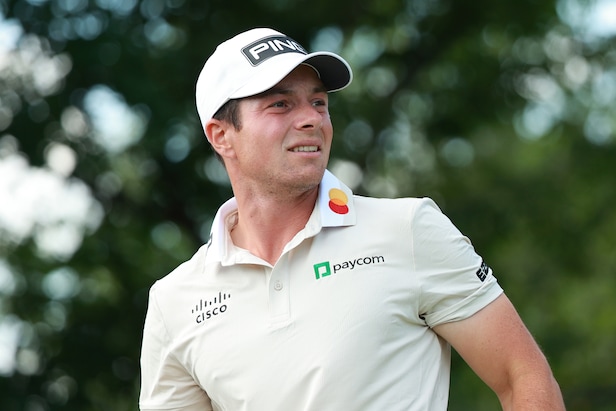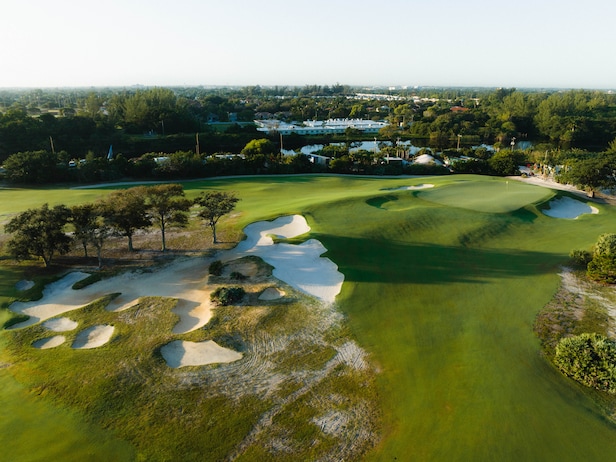3 holes that could decide the Solheim Cup – Australian Golf Digest

- by Admin
- September 10, 2024

International team match-play events are a unique breed of golf. The cauldron of elite players competing for several days in four-ball and foursomes would make for riveting golf on any course, but designs that place a premium on elite accuracy, metal control and the ability to execute dangerous risk/reward shots take the drama to new heights.
Virginia’s Robert Trent Jones Golf Club, on the shore of 800-acre Lake Manassas, wasn’t designed by its namesake purposefully for match play, but it assumed status as one of the country’s premier team-competition venues after hosting the first four Presidents Cups held on American soil, each won by the United States. The club, located roughly 40 miles west of Washington, D.C., will once again assume match-play center stage when it hosts this week’s Solheim Cup.
The course is laid out across an idyllic, wooded property with gentle rise and fall. The professional women will find a style of design that’s familiar to tour players, with fairways that suggest defined shot shapes as they tumble and pivot around bunkers and natural slopes. The greens are average sized and well-bunkered and possess interior levels and ridges to create distinct hole locations.
Courtesy of Roger Snyder false Private Robert Trent Jones Golf Club Gainesville, VA, United States 4.5 106 Panelists
- Second 100 Greatest
- Best In State
Designed by Robert Trent Jones and his long-time associate Roger Rulewich just before they tackled the ambitious and enormous Robert Trent Jones Trail string of courses in Alabama, Robert Trent Jones Golf Club was intended to be the veteran architect’s definitive statement on championship golf. Routed on rolling terrain densely covered with pine and hardwoods, the design reflects the philosophy Trent pioneered—heroic architecture—with well over a hundred glistening white sand bunkers and the last 11 holes playing along the shoreline of Lake Manassas, including the par-3 ninth with a peninsula green, the par-3 11th over a lake cove and the par-4 18th over an inlet and up a lakeside bluff. The RTJ G.C. has hosted the Presidents Cup matches on four occasions and was a PGA Tour stop in 2015. View Course
Seven holes are strung along the Lake Manassas shoreline, the type of asset Trent Jones rarely failed to utilize (Kyle Phillips has consulted with the club on renovations for the past 25 years). “Water lures us to a supreme triumph or painful death,” Trent Jones wrote, and that is likely to be true as the Solheim Cup competitors hit a run of consecutive holes in the middle of their matches from nine through 13 that all play along the lake.
Three of these volatile holes—nine, 10 and 12—should have profound effects on the outcome of the competition. Let’s take a closer look.
No. 9, 177 yards, par 3 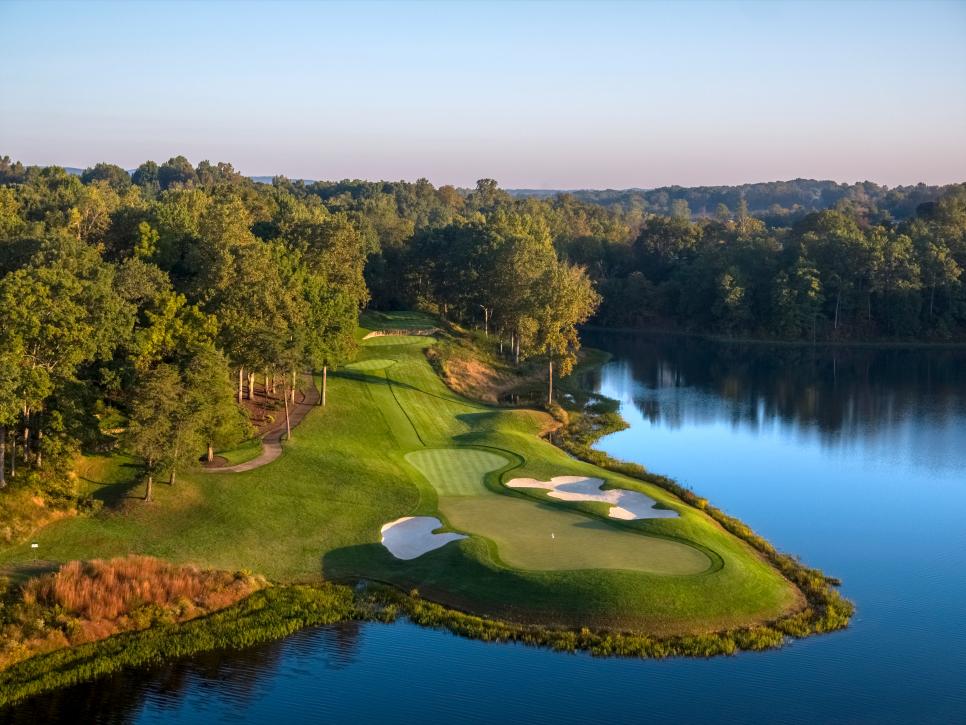
Photo courtesy of Robert Trent Jones Golf Club
This par 3 is the most recognizable hole at Robert Trent Jones Golf Club, playing downhill to a green perched above Lake Manassas. During construction of the course in the late 1980s, Trent Jones was able to extend the peninsula further into the lake, so the green is effectively covered on three sides by the water. It’s an exacting shot made more challenging due to its exposure to the wind, and hole location can significantly alter the dynamics. Flags toward the front of the slender green leave little room to miss left or right. As they move progressively deeper, they add extra distance and hang time, courting the water. Only the bravest players will take on back left pins.
More From Golf Digest  Solheim Cup All 24 players competing in the 2024 Solheim Cup, ranked
Solheim Cup All 24 players competing in the 2024 Solheim Cup, ranked 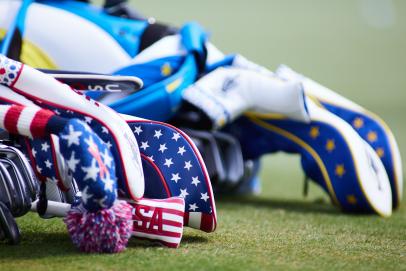 Solheim Cup What’s on the line at the Solheim Cup? Analyzing what feels like a ‘must’ win for the Americans
Solheim Cup What’s on the line at the Solheim Cup? Analyzing what feels like a ‘must’ win for the Americans  solheim cup Former President Barack Obama a surprise guest at U.S. Solheim Cup team dinner No. 10, 362 yards, par 4
solheim cup Former President Barack Obama a surprise guest at U.S. Solheim Cup team dinner No. 10, 362 yards, par 4 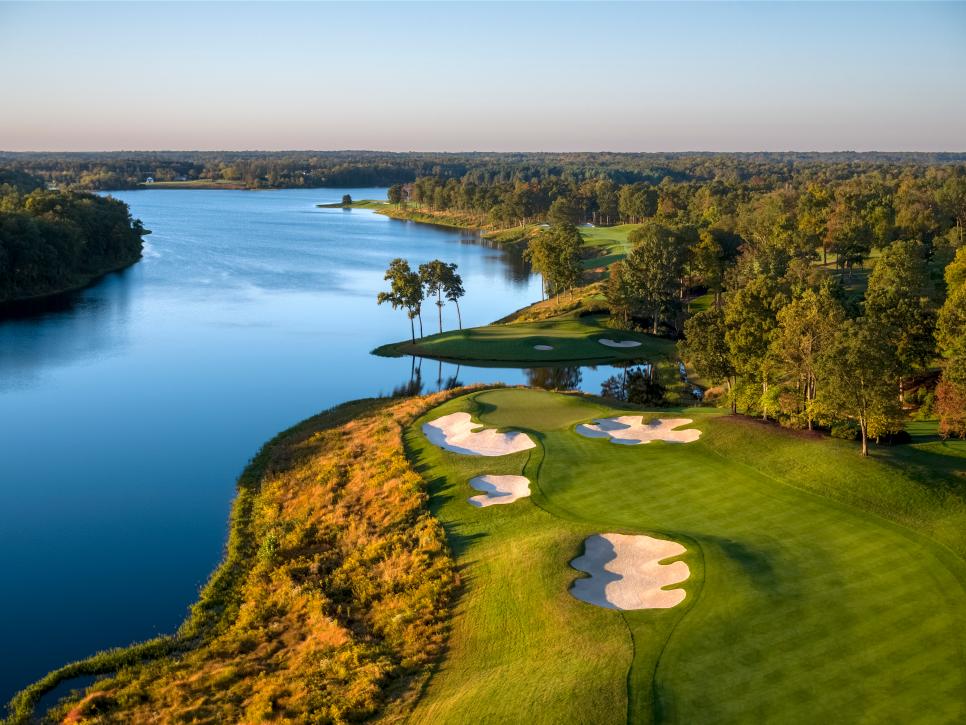
Photo courtesy of Robert Trent Jones Golf Club
It’s likely that at least for some sessions, Solheim Cup officials will set up the short 10th as a drivable par 4. Depending on where the tees are placed, players who want to take the shot will either try to fly drives 250 to 260 yards onto the front of the green or shoot for the narrow gap between the front bunkers. Playing from either of the bunkers isn’t the worst tactic, depending on where the hole is cut, and there’s also the option of laying back to try to get up and in from a favorite distance in the fairway. Gamesmanship and position in the match, however, may take the conservative option out of play.
No. 12, 475 yards, par 5 
Photo by Nicky McIlvaine
Twelve is the third of four holes with water playing down the left. Like the 10th, this is a scoring hole, an easily reachable par 5 for all the competitors. The trick here is placing the drive in the fairway where the landing area is just 30 yards across, pinched between the lake and a line of trees and a small pond in the right rough. From there it’s a clear shot of perhaps 200 yards or less to another deep, narrow green divided into several tiers. Care must be taken not to miss long or left, but expect the players to be on the attack, and teams or individuals who walk away with a 5 here have probably lost the hole.
More From Golf  TOUR TECHNIQUE Rose Zhang shows how you can swing smooth and still rip it
TOUR TECHNIQUE Rose Zhang shows how you can swing smooth and still rip it 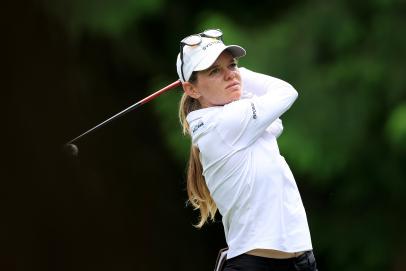 solheim cup This Solheim Cup rookie overcame a hospitalization earlier this year to make the U.S. team
solheim cup This Solheim Cup rookie overcame a hospitalization earlier this year to make the U.S. team 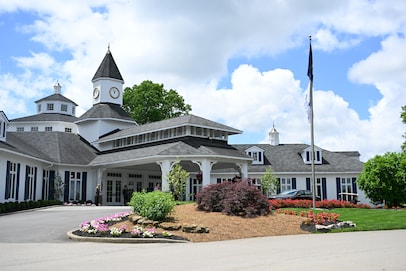 Solheim Cup Valhalla chosen to host 2028 Solheim Cup
Solheim Cup Valhalla chosen to host 2028 Solheim Cup
This article was originally published on golfdigest.com
The Latest News
-
December 30, 2024Titleist’s GT280 mini driver surfaces at the Sentry – Australian Golf Digest
-
December 30, 2024Our favorite Golf Digest portraits of 2024 – Australian Golf Digest
-
December 30, 2024‘I can explain’: Truth behind Travis Head’s bizarre wicket celebration
-
December 30, 2024The umpire gave him not out and Snicko couldn’t prove he hit it. Here’s why Jaiswal was dismissed
-
December 30, 2024Australia’s finest hour: Cummins’ men get timing right on cricket’s biggest stage


